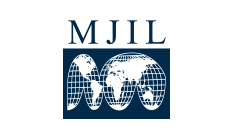Abstract
In Part I of this Article, Renshaw explains some of the current theories about how and why states come to adopt human rights norms and then translates these norms into laws and policies. In Part II, she sets out the contours of the TVPA and the global regime with which it coexists, the United Nations Palermo Protocol. Part III considers how ASEAN States have responded to the global anti-trafficking regime. Part IV explores how ASEAN states perceive the issue of human trafficking. Part V describes how ASEAN states have responded to the threat of sanctions under the TVPA. Part VI examines the emergence of a regional framework to address human trafficking. This Article concludes that unilateral measures implemented under the TVPA disrupt regional processes and retard the internalization of human rights norms about trafficking in persons.
Recommended Citation
Catherine Renshaw,
Human Trafficking in Southeast Asia: Uncovering the Dynamics of State Commitment and Compliance,
37
Mich. J. Int'l L.
611
(2016).
Available at:
https://repository.law.umich.edu/mjil/vol37/iss4/2

